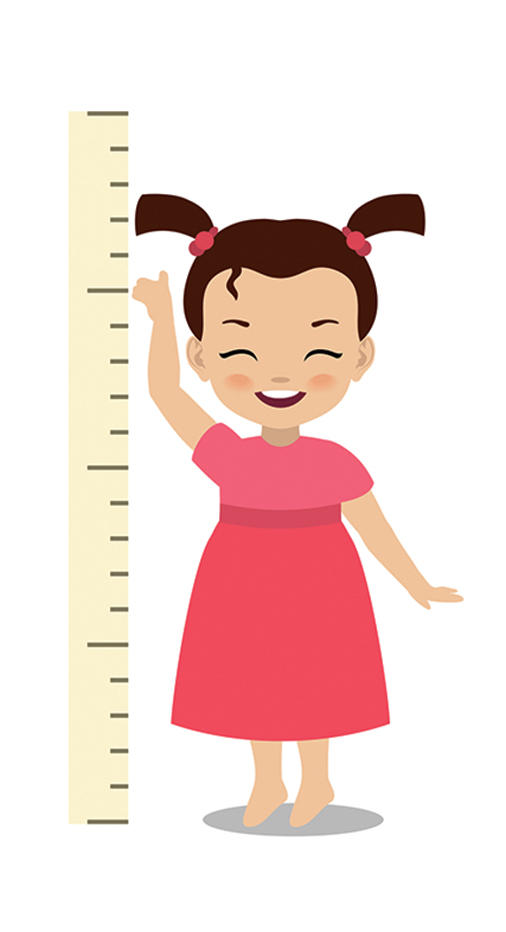Parents worry when their children appear shorter than their peers and are always made to sit in the front row in class. “How can we increase their height?” they ask, their faces creased with anxiety.
Height is determined by genes and influenced by diet and environment. The human race is growing taller with better nutrition. At present, we are about 5 per cent taller than our ancestors were 100 years ago. Height also varies with race and country. Europeans and Americans are taller than Southeast Asians. The average height of an Indian woman today is 152.6 centimetres (5 feet), and that of a man 164.9cm (5 feet 4.9 inches).
A child’s height is usually the average height of both parents, with some exceptions, provided there are no genetic, endocrine or bone diseases. There are several formulae to calculate the approximate eventual adult height of a child.
It can be calculated as double the height on the second birthday for a boy and at 18 months for a girl. Or, add 2.5 inches (7.6cm) to the average of both parents for a boy and subtract 2.5 inches (7.6cm) for a girl. Younger siblings of the same sex tend to be shorter than older ones.
Growth does not occur uniformly. Height increases in spurts. In the womb, a baby grows in size from a microscopic cell to between 18 and 22 inches (45.7-60cm) at birth. Height and weight then increase rapidly till the age of two years. There is a third growth spurt at puberty that lasts till around 15 years in girls and 18 years in boys. After this the ends of the bones fuse and any further dramatic increase in height is unlikely.
Height can start decreasing in middle age. This may be due to a stooped posture causing an appearance of relative decrease. It may also be an actual decrease due to degeneration and shrinkage of intervertebral discs, osteoporosis, fractures or decreased height of the vertebrae. The arches of the feet may get flattened (flat feet) and contribute to this.
Once the puberty growth spurt is over, adult height is usually reached and there is not much increase after that. To maximise the puberty growth spurt:
Try to avoid processed and junk food laden with preservatives, transfats, refined sugar and other chemicals. Eat 4-6 helpings of fresh fruits and vegetables daily.
Regular exercise started in childhood and continued into adult life provides good posture, strengthens bones and muscles, and helps to increase height. Regular exercise also promotes the formation and release of human growth hormone essential for growth.
Everyone should get at least an hour of exercise a day. Babies should be encouraged to crawl and walk. They should not always be carried. From school-going age, 40 minutes should be devoted daily to aerobic activity like running, jogging, walking, swimming, cycling; 10 minutes to muscle building preferably squats, sit-ups and push-ups. Growing children should preferably use their own body weight to exercise and not dumbbells. Another 10 minutes a day should be devoted to flexibility and posture with yoga and stretches. There is no point in curbing exercise for school-going children because of the hectic academic schedule and tuition.
To grow, the body needs growth hormones and these are released during sleep. Babies need around 10 hours of sleep and adolescents 8-9 hours. This should also not be curtailed for studies.
Many supplements advertised in the market claim to increase height. They are of doubtful value. After puberty, once the growth plates of the bones are fused, the chances of height increasing are unlikely.
The writer is a paediatrician with a family practice at Vellore and the author of Staying Healthy in Modern India. If you have any questions on health issues, please write to yourhealthgm@yahoo.co.in











